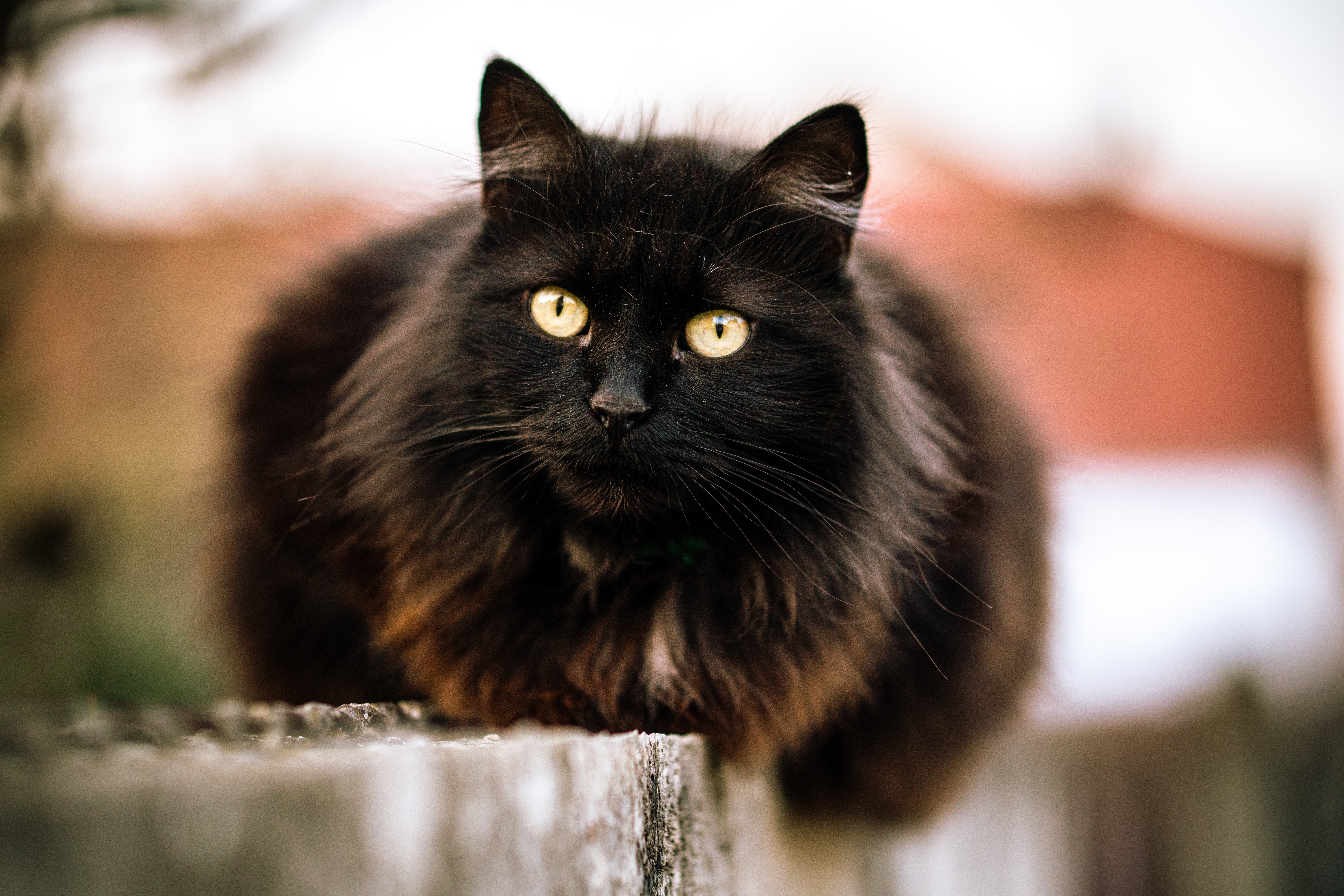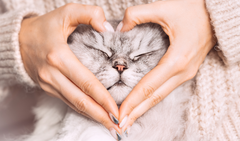Introduction to the Bombay Cat Breed
Among cat breeds, the Bombay cat is remarkable as a mini panther—small in stature but big in presence. This breed of cat originated from the vision of cat breeder Nikki Horner in the 1950s, who desired to create a truly domestic "Miniature Black Panther." By selectively breeding Black American Shorthairs with Sable Burmese, she succeeded in developing this short-haired breed's distinctive look and affectionate temperament. The Bombay cat's satiny short coat gleams with a patent leather shine, their copper penny eyes or sometimes copper-golden eyes captivating anyone who gazes into them. Cat fanciers' associations and organizations like The International Cat Association quickly recognized this outstanding feline, and now, the Breed Standard expects an opulent black coat with "Nose leather" and paw pads that are jet-black as well. With a muscular body build and fluid movements, the Bombay cat presents elegance fused with agility, making them a standout at any cat show or pedigree database entry. While their exotic appearance echoes wild ancestors, their temperament is all about human interaction, family bonds, and social charm.
Unique Appearance and Physical Traits
The Bombay cat is instantly recognizable, thanks to its short-haired breed status and distinctive features. The Head and Ears are gently rounded, with a Roman nose and expressive, forward-facing ears that add character. Their eye color is always striking, ranging from bright copper eyes to deep copper-colored eyes reminiscent of polished coins. This adherence to the Breed Standard has won them places in the Grand Gallery and among Breed & National Winners in top cat fanciers' associations. The black coat is not just visually arresting but feels soft and dense, augmenting the cat's aura of mystery. Paw pads, nose, and even the "Nose leather" are all black, distinguishing them from other breeds like the Maine Coon or Russian Blue, which lack this uniform intensity. Their muscular body build owes much to their hybrid ancestry, blending the strength of the Burmese breeds with the poise found in the domestic shorthair. The overall look is genuinely that of a "Miniature Black Panther," with a confident walk and a poised stare, which is why enthusiasts and cat breeding circles often refer to Bombay cats by this moniker.

Temperament and Personality of the Bombay Cat
Known for their social personality, Bombay cats are fond of human interaction and rarely leave their owner's side, often described as "velcro cats." They're celebrated by cat behaviorists for their vocal nature, not noisy, but communicative, making soft meows or chirps to share affection or needs. Unlike some more independent breeds, Bombays quickly adapt to shared households and thrive when provided mental enrichment through interactive toys, puzzle toys, and games with laser pointers. They bond deeply with their humans, often following them to every room or perching on their favorite cat tree to observe family happenings. Their intelligence and affectionate nature make leash training, cat carrier acclimation, and cat grooming relatively simple tasks compared to other breeds. Because Bombays value companionship, owners should plan for daily play, cuddling sessions, and enrichment opportunities like new cat trees, scratching posts, and even innovative pet care solutions from platforms like Shop Cat Solutions or care reminders from the pet care app Rover. Their behavior is rarely problematic when their social, environmental, and interactive needs are met.
Health Considerations and Care Requirements
Robust as they are, Bombay cats are not immune to specific health concerns that their hybrid background and breed-specific genetic lines have introduced. Like some pedigree cats, Bombays have an increased risk of hypertrophic cardiomyopathy, an inherited type of heart disease leading to heart failure, which requires ongoing monitoring and sometimes visits with a Veterinary Cardiologist. Routine vet visits for veterinary check-ups, preventive care, and dental screenings are essential to prevent conditions like dental disease, feline dental disease, or craniofacial defects, which can sometimes be found in lines with strong Burmese head defect influence. Parasite prevention through flea and tick prevention and parasite control is recommended year-round, as is testing for heartworm infection and viral risks, including feline leukemia virus. Caring for overall dental health might involve special dental chews or filtered drinking fountains to encourage healthy hydration. A diet balanced between dry food, wet food, and quality commercial cat food is advised to meet their nutritional needs and support their shiny grooming coat. Spayed or neutered Bombays tend to live longer, healthier lives and are less prone to behavioral issues. When considering a new pet, always opt for reputable breeders or an animal shelter for adoption, and consider investing in pet insurance to cover unexpected expenses.

Socialization and Living Environment
The Bombay cat is an exemplary indoor cat, thriving within apartments, homes, and spaces that offer stimulation and interactive toys. As social animals, they integrate well with other cats or gentle dogs, provided introductions are gradual and supported by strategies recommended by cat behaviorists. Their natural curiosity and intelligence greatly benefit from enriching surroundings, such as varied cat trees, scratching posts, and high-quality cat toys that appeal to their instinctual need to climb, scratch, and hunt. A well-placed cat tree in a sunny window allows them to survey their environment, while puzzle toys ward off boredom during the family's absence. Owners are encouraged to pay attention to routine care, scheduling grooming for the short-haired breed, and regularly cleaning their living areas to reduce the risk of sinus problems or respiratory issues. Proper socialization as a kitten sets the path for a lifetime of confidence, playfulness, and adaptability, making them a welcome companion for children, seniors, or multi-pet households.
Bombay Cat Training and Enrichment Techniques
Training a Bombay cat is an exhilarating process, supported by their intelligence and desire to please. Clicker training, treat rewards, and play with interactive toys or laser pointers keep them mentally engaged and physically fit. Cat care tips often emphasize the importance of regular training, not just for entertainment, but as a way to channel their natural energy and curiosity constructively. Routine handling sessions, grooming, leash experiences, and transporting in a cat carrier all become far easier when training begins early. The addition of cat trees or climbing structures supports their natural athletic tendencies and reduces the risk of frustration or destructive behaviors. For variety, owners may employ new games, puzzle toys, and rotating cat toys, ensuring the Bombay cat remains sharp and happy. Enrichment devices available via specialized shops or platforms like Shop Cat Solutions allow for an ever-changing environment that mirrors the mental challenges found in wild settings.

Why Bombay Cats Make an Exceptional Companion
Endorsed by the Governing Council of the Cat Fancy, cat fanciers' associations, and breed organizations, including The International Cat Association, the Bombay cat is a top choice for those desiring an affectionate yet striking feline friend. Unlike some less social cat breeds, Bombays form profound bonds with their humans, offering both emotional support and daily entertainment. They fit seamlessly into homes as Caring for Your Feline Companion becomes intuitive with their loving, trusting nature. With regular care, attention to health (including early screening for heart disease, polycystic kidney disease, and other genetic predispositions), and a balanced lifestyle, they become lifelong friends whose beauty and charm are only matched by their loyalty and warmth. For anyone seeking a true "Miniature Black Panther" with a playful soul and a loving heart, the Bombay cat is the living embodiment of elegance and companionship.




















